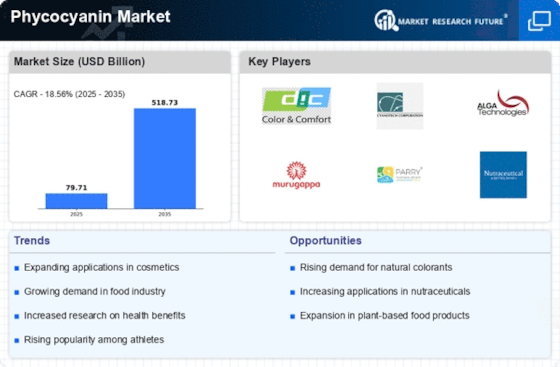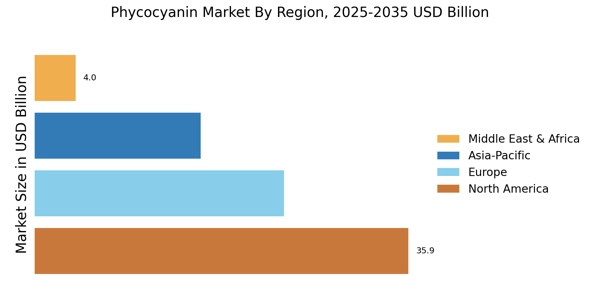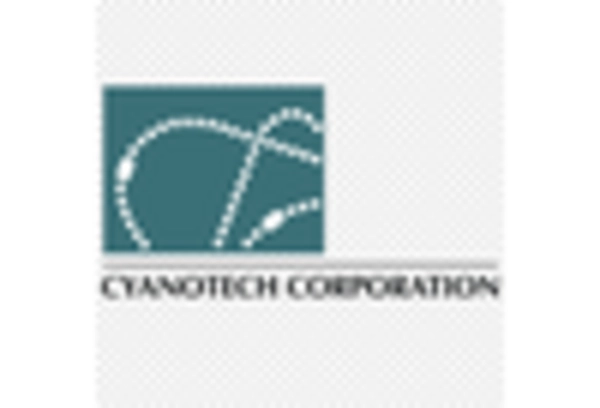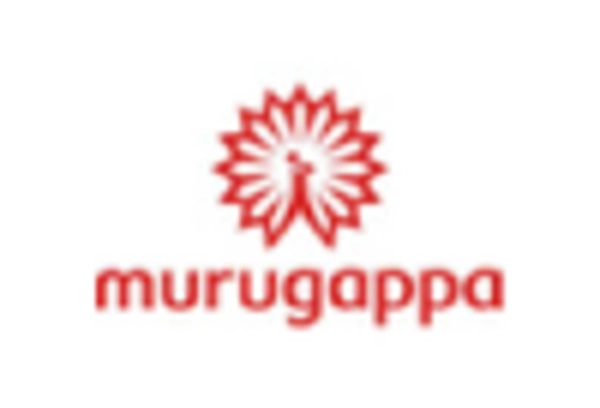Growing Health Consciousness
The increasing awareness of health and wellness among consumers appears to be a pivotal driver for the Phycocyanin Market. As individuals seek natural and organic alternatives to synthetic additives, the demand for phycocyanin, a natural pigment derived from blue-green algae, is likely to rise. This trend is reflected in the food and beverage sector, where phycocyanin is utilized as a natural colorant and nutritional supplement. Market data indicates that the health and wellness industry is projected to grow significantly, with consumers prioritizing products that offer health benefits. Consequently, the Phycocyanin Market is positioned to benefit from this shift towards healthier lifestyle choices, as phycocyanin is recognized for its antioxidant properties and potential health benefits.
Rising Popularity of Plant-Based Diets
The increasing adoption of plant-based diets is likely to serve as a catalyst for the Phycocyanin Market. As consumers shift towards vegetarian and vegan lifestyles, the demand for plant-derived ingredients, including phycocyanin, is expected to grow. This trend is particularly evident in the food and beverage sector, where phycocyanin is utilized not only for its color but also for its nutritional benefits. Market data indicates that the plant-based food market is experiencing robust growth, with consumers seeking alternatives that align with their dietary preferences. Consequently, the Phycocyanin Market stands to gain from this movement, as phycocyanin aligns with the values of health-conscious consumers who prioritize natural and plant-based ingredients.
Increased Focus on Clean Label Products
The trend towards clean label products is becoming increasingly prominent, influencing the Phycocyanin Market. Consumers are demanding transparency in food labeling, seeking products that contain recognizable and natural ingredients. Phycocyanin Market, being a natural pigment, fits well within this clean label movement, as it is derived from algae and free from synthetic additives. Market data suggests that the clean label trend is reshaping consumer preferences, with a growing number of brands reformulating their products to meet these demands. This shift presents a significant opportunity for the Phycocyanin Market, as manufacturers look to incorporate phycocyanin into their offerings to appeal to health-conscious consumers who prioritize clean and natural ingredients.
Regulatory Support for Natural Ingredients
Regulatory frameworks that support the use of natural ingredients are likely to bolster the Phycocyanin Market. As governments and regulatory bodies increasingly recognize the benefits of natural additives, there is a growing acceptance of phycocyanin as a safe and effective ingredient in various applications. This regulatory support is crucial for manufacturers looking to innovate and expand their product lines. Market data indicates that the regulatory landscape is evolving, with more favorable conditions for natural colorants and additives. As a result, the Phycocyanin Market is expected to thrive, as companies leverage this supportive environment to introduce phycocyanin-based products that meet consumer demand for natural and safe ingredients.
Innovations in Food and Beverage Applications
Innovative applications of phycocyanin in the food and beverage sector are driving growth in the Phycocyanin Market. Manufacturers are increasingly incorporating phycocyanin into a variety of products, including smoothies, energy drinks, and health supplements, to enhance their nutritional profiles and visual appeal. The versatility of phycocyanin as a natural colorant is particularly appealing to brands aiming to differentiate themselves in a competitive market. Recent market data suggests that the demand for natural colorants is on the rise, with phycocyanin emerging as a preferred choice due to its vibrant hue and health benefits. This trend indicates a promising future for the Phycocyanin Market, as more companies explore innovative formulations that leverage the unique properties of phycocyanin.


















Leave a Comment